Shaila Catherine has been practicing since 1980 and teaching since 1996. After studying and practicing extensively with Pa Auk Sayadaw at the Forest Refuge, she wrote a book at his suggestion on jhāna practice and its relationship to vipassanā. In August of this year, she will bring jhāna teachings and her enthusiasm for the suttas to bear on the subject of happiness, in a course at BCBS. Insight Journal asked her to talk about how she arrived at this point, and her plans for the course.
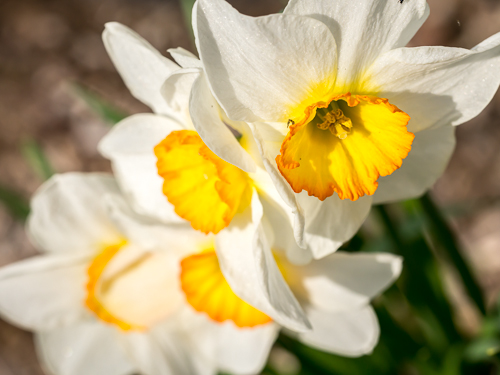
Insight Journal: How did you first come to the Dhamma?
Shaila Catherine: I started meditating when I was still in high school. I attended my first retreat when I was in college. Retreat practice touched me very deeply. I was yearning for a depth of understanding in life. In Buddhism I found practical methods to explore the mind and tools for understanding myself. For the first eight or nine years of my practice I only meditated; I didn’t study. When I started to read the discourses in the early nineties, I was very inspired by the clarity of the goal and the practical instructions on how to reach that goal.
The Buddha gave us a brilliant map of the path, with practical instructions on how to cultivate deep peace in our own lives. The discourses are often simple conversations between the Buddha and a disciple. I find these ancient instructions are usually just as relevant in today’s world. They speak to my own life. Sometimes the suttas point to something that’s beyond what I understand—this is exciting. Reading that gives me clues to the possibility of true liberation. That combination of practical skills and inspiration for awakening kept me riveted to the discourses. To this day I love to read the suttas. I just keep reading and rereading them; they inspire my practice.
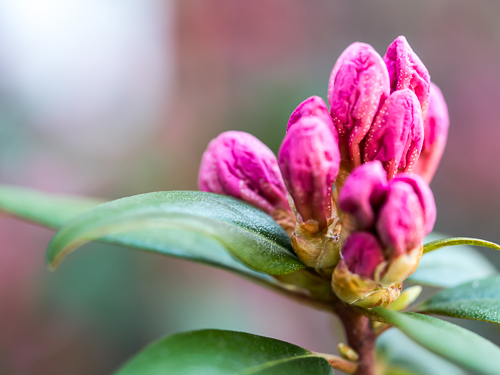
IJ: One of the analogies I like to use is that it’s like learning to play an instrument or learning a sport, and you’ve got this master teacher, you’ve got a master class, like Ithzak Perlman explaining to violin players how to be a concert violinist. So you have these little things pointing beyond, but little things that are so practical, pragmatic: “Hold the bow just like this, it will be so much better.”
SC: Yes. I’ve been teaching courses in my sangha and meditation group at home, and also online for many years now. We’re slowly working our way through the suttas. We’ve read the Middle Length Discourses, the Udāna, the Sutta Nipata, Bhikkhu Bodhi’s In the Buddha’s Words, the anthology of the Numerical Discourses—we’re now in our third year with the Saṃyutta Nikāya. So we’re really going through the texts. It’s an incredible joy for me to read these in community, and to discuss them with friends and students.
I am not a Pāli scholar or an academic. I’m a practitioner who uses the suttas in my practice, with an aim for liberation. So when we discuss them in our groups every month, we look at the text, try to understand what it meant at the time of the Buddha, and get some sense of the historical context. But we’re also very interested in what it could mean for us. What is the liberating teaching here? How can this be applied? What is relevant, and what is irrelevant to us?
I don’t think that the human mind has changed so much in two-and-half thousand years; the teachings are, for the most part, very relevant to how we live, what we struggle with, how we can work with the problems, the obstacles in our lives and in our minds, and how we can clear the path.
IJ: It’s not so much that the human mind has changed, but the language has changed a lot, and most of those metaphors—we don’t have a lot of farmers any more.
SC: We may not all be farmers, but we do work. We don’t have chariots, but we use vehicles for travel. We send emails and text messages rather than messengers. Our nation is not ruled by a king, and our religious leaders generally don’t sleep in public parks. But we can draw out equivalent social and personal situations that help to relate the teachings to our lives.
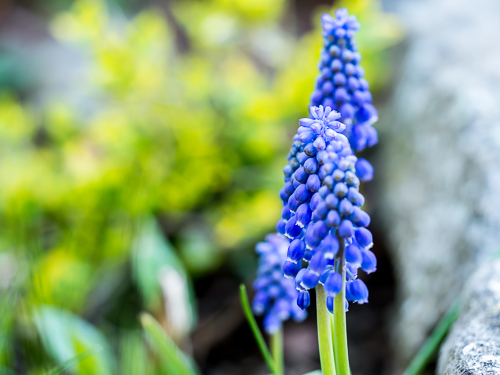
IJ: I was going through your book. I’m always interested in what people choose as epigrams, quotes at the beginnings of chapters. Not surprisingly, you use quotes from the suttas, but I noticed that in the beginning half of the book , you seem to be very partial to the earliest texts, the Sutta Nipata, the Udāna, the Itivuttaka—the ones that scholars believe to be the very earliest texts. Is there a reason for that?
SC: It was the content that touched me, not the time period. I am perfectly happy with later texts as well as earlier texts—it’s the practical application that interests me the most. The suttas themselves are so rich and they’re so beautiful that it’s very easy to find good quotes.
It was valuable to me to try to ground the instructions and the practices that I was doing for concentration and vipassanā by finding their sources in the ancient texts. It was actually quite interesting, in writing both Wisdom Wide and Deep, my second book, and Focused and Fearless, my first book, to consider the source material—to consider each practice and each instruction and to see where it was derived from in the Buddha’s discourses. Did it come from the discourses, or did it come from the Visuddhimagga, the commentarial discourses, later teachings?
I’m perfectly happy to practice methods based on early discourses or derived from later elaborations and commentaries. I think a great deal of wisdom developed after the Buddha as well. I appreciate learning from the generations of serious practitioners who have practiced what the Buddha taught and contributed their understanding on how to apply the instructions and realize the goals.
IJ: And in the oldest texts you do find a lot about the jhānas and concentration.
SC: Yes, They’re thoroughly integrated into the Buddha’s teaching. The very definition of concentration as “right concentration,” samma samādhi, the Noble Eightfold Path, includes the four jhānas. So it makes a lot of sense to me, now that Buddhism in the West is starting to put down roots and settling a bit, now that there’s some growing maturity and wisdom in the practitioners, to turn again to concentration practices and to try to deepen our understanding of the mind—to really sharpen the tool of the mind—by exploring these practices.
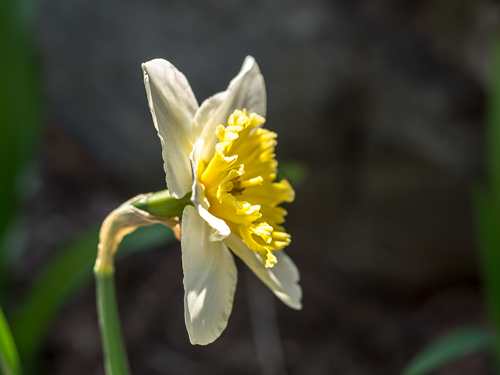
IJ: What do you mean by jhāna and what is its role in practice?
SC: When I first wrote Focused and Fearless, the term jhāna was not very widely used in our insight meditation circles. I think that’s changed quite a bit in the last few years. But unless somebody actually practices it you don’t really know what it means. It can be translated as “meditation,” but it’s used in a very specific context in the Buddhist tradition, which is to refer to four deeply absorbed states of concentration, where the mind is unified, steady, and there’s profound stability of concentration that is unified with a single object.
So jhāna practice is about training the mind. It doesn’t interest me for someone to just slip into a certain mind-state once in a while. It’s about developing meditative skills and the ability to hold an object for profound contemplation. In the jhāna practice you train your mind to stay steadily focused on your meditation subject. Maybe it’s the breath, maybe it’s a color, maybe it’s a body part, maybe it is a being that you’re developing loving kindness towards—whatever it is you’re working with as your meditation subject, you hold that until the mind is absorbed. There’s a continuity of mindfulness to the point that the mind becomes so steady on that object that it’s as though the mind is unified and absorbed with the object. And you can maintain an immersion for very long periods of time—jhāna is a deeply steady state.
The mind learns both how to skillfully hold an object for contemplation, and how to release. To enter into absorption, one has to relax, one has to release. To steadily give attention to your meditation object, you must turn away from all the business of life. Holding attention steady on your meditation object is not clinging to the object; you’re steadying the mind by letting go of every other potential distraction.
Therefore, jhāna practice is a training that steadies the mind by letting go. When you emerge from concentration, and you do vipassanā practice—contemplating the impermanent, unsatisfactory or empty nature of mind and body—the mind is stable, and can perceive things clearly. Say you want to see the impermanence of matter. You can focus on the body, and the mind will penetrate it and see it clearly. If you want to see the subtle workings of perception, you can focus on that and discover the way perception functions. You can start to see things very deeply, because of the qualities of mind that were developed during the jhāna practice.
IJ: I think a lot of people, possibly because we went through this period in the West where the jhānas weren’t really taught that much, and there was even some suspicion that people would develop blissful states that they would get caught in, don’t realize that the Buddha taught this to a lot of people and did not at all portray it in that way. It was something that anyone who was sincere and wanting to learn, could do.
SC: Yes. It’s quite accessible. It requires supportive conditions, but it is something that is very doable for committed lay practitioners. It does not require any particular birthright, robe or adherence to any kind of beliefs. It’s a mental training.
But it is important that concentration practice be undertaken as an integral part of the Noble Eightfold Path—that means it is informed by Right View. That means that in the very way that we develop concentration, the very way that we develop jhāna, we are using it as a basis for liberating insight.
The Buddha gave us a comprehensive teaching that leads to complete awakening. If there are any aspects of the path that we are individually or collectively shying away from, it would be worthwhile to examine them. It’s not to say that we should believe everything that the Buddha said. He lived within a distinct social and historical context, but concentration and jhāna represent such a significant part of the Eightfold Path that they cannot be ignored.
In the earliest discourses, the Buddha encouraged lay people to, “from time to time,” enjoy the bliss of seclusion, that is, to develop the concentration states of jhāna. He recognized that lay people have many worldly duties—they cannot just take their food in the morning, go sit under a tree, and spend every afternoon abiding in jhāna. Even so, he taught lay people this practice.
I think the jhāna practice is definitely accessible for lay people “from time to time.” Strengthening the factor of concentration is important.

IJ: Even more so in this day and age, when there’s so much in our environment that tends to make us distracted, compared with the time of the Buddha.
SC: Yes, the challenges we face now are insidious, because we carry them around in our pockets. Our identities are bound up with our communications. But the first instruction is, “a bhikkhu, having gone to the forest or to the foot of a tree.” In a way, the first step is to be willing to set down all the many things that are on our to-do list and to go to our meditation seat. Then, what do we do when we get to our meditation seat? Do we bring all that stuff along? Or are we able to set it down, whether our meditation seat is a retreat, a day-long, or just an hour or two at home. We start to establish the seclusion by seeing what we carry, what we’re attached to, and learn to let the distractions go.
Of course, we have to see the restlessness of the mind and any hindrances that might arise. We don’t just plunk ourselves down on the meditation cushion and find “Wow! Instant samādhi!” Most people first need to see the unskillful patterns that have been conditioned by how they live.
So the development of concentration includes a skillful encounter with, understanding, and overcoming of the hindrances. We have to face them, work with them, and see how they are conditioning our minds. Then we can make more skillful choices in how we’re going to relate to life.
IJ: One of the things that we try to focus on here at BCBS, perhaps in some contrast to other centers, is the balance between study and practice. Which is not to say other groups don’t have study at all, but we tend to balance more in that direction. How do you hold that balance between study and practice?
SC: I like to see this balance over the long term and trust people’s interests. So if a student is in a phase of their practice where they’re really keen on just meditating, then I would encourage them to give most of their time to meditation, with just a smaller component to the study—understanding that people will swing around at another point and want to spend more time studying.
I’m finding that my own practice is quite balanced in terms of study and practice. I work with what I read through my meditation. I turn to the suttas for instruction, for further inspiration. For example, on a recent retreat I worked primarily with the Ānāpānasati Sutta, a classic meditator’s discourse. I took it step by step, working with that meditation model. On many other retreats, I’ll take just one paragraph that inspires me. It could be a paragraph that I find beautiful or one I find incomprehensible. I just don’t understand it; I’m bewildered by it. So I take it into the meditation to let it touch me in some non-intellectual way.
Each month I have my students at our study group in California memorize a verse. People can pick short verses or they can pick the entire discourse—some people do! Then we recite what we’ve memorized at the beginning of our session each month. I find that by committing something to memory, even if it’s just four or five lines, it’s easier to meditate on it, because to memorize something you have to recite it and turn it over in the mind. Then it pops up sometimes—sometimes at just the right time. It’s the perfect reminder to bring wisdom into action.
IJ: So you have people who have memorized entire suttas?
SC: Entire suttas, yes. There are only a couple of people who have the mental agility and interest to do that on a regular basis, but yes, we do. It’s quite rewarding for them, and it’s very supportive of their meditation practice. The teachings inform the meditative development. In the refinement of the meditation practice, we see how the mind is working. We witness the path that the Buddha articulated manifesting in our lives.
I’m really not interested in memorizing a whole bunch of sounds, or chants, or words. It has to be something that we’re working with in our lives.
IJ: In addition to being interested in the jhānas as a particular subject, you’re also interested in Abhidhamma. BCBS is one of the few places you can actually take a course in Abhidhamma. Different people have different feelings about what Abhidhamma’s place is in the bigger scheme of things. People agree that it came after the suttas themselves. What is it, from your experience, that’s unique to the Abhidhamma, as opposed to the suttas?
SC: The Abhidhamma interest has come very late in my practice, only fairly recently. For many years I practiced in the Western insight meditation scene, and then spent most of the 90s in Asia. When I returned to practice and teach in the West, my inspiration came mostly from the various teachings I picked up from Western teachers, combined with sutta readings.
When the Insight Meditation Society invited Pa Auk Sayadaw to teach at the Forest Refuge in 2006, I attended his course. Some of the practices that he taught me were exercises preserved in the Visuddhimagga and based on Abhidhamma thought. Since I didn’t have a background comprehension of basic Abhidhamma concepts, I first experienced the training from a strictly meditative perspective.
But upon emerging from the retreat it is natural to want to understand “What was that!” I wanted to understand how the system worked, how it developed, what views it relies upon. I wanted to see how it might fit with the way that I see things in my life and how it would inform my life at home. Since he asked me to write the book that ended up becoming Wisdom Wide and Deep, I needed to do a lot more study in order to understand the source material for each of the practices that he had taught during the retreat and that I was sharing in the book.
One of the most pleasant ways that I studied the Abhidhamma was to attend the five day course that BCBS offers. Andy O [Andrew Olendzki, BCBS Senior Scholar, who has taught many courses on Abdhidhamma over the years] is very skilled at making a relatively dry subject engaging, almost exciting. It was like diving into an entirely new world of Buddhist thought. I found it fascinating, clarifying, and incredibly supportive to my meditation practice.
One of the important expressions in Abhidhamma is the concept of the momentariness of mind and matter. Rather than considering the impermanence of broad concepts—such as the body is impermanent and it eventually dies—one can contemplate the impermanence of the elements that compose the body. In ancient India they conceived of those elements as characteristics of earth, water, fire and wind, and various derived qualities of matter. In meditation, we would discern the characteristics of matter (hardness, heat, pushing, heaviness, flowing, cohesion, softness) as arising and passing phenomena. You can witness the momentary arising of phenomena; see what arises together in that moment; examine how things produce other things—generation, causality, dependent arising. This approach views matter in terms of causal relations that affect momentary phenomena.
Rather than assume a dualistic dynamic between subject and object (“I see a book”), the Abhidhamma analysis breaks perception down into cognitive processes that include 17 types of mind moments. Each conscious moment serves a particular function and is composed of distinct mental constituents. Each constituent arises and passes away, is ungraspable, is dukkha. And the whole world of momentary experience is seen to be not “I,” it’s not “me,” it’s not “mine.” There’s no self to be found.
The Abhidhamma offers a precise approach to the deconstruction of body and mind. The experience of “I am feeling this,” and “I am seeing this,” and “I am thinking this” is analyzed into the various processes that produce a single moment of experience. We examine the intricate network of mind, matter, causes, and relations. The Abhidhamma gives the meditator a map for discerning and analyzing those processes so that we can learn to recognize them and respond skillfully to whatever arises. So we can realize, for example, how giving unwise attention to an object perpetuates aversion or greed, and how giving wise attention to an object promotes mindfulness.
Before doing Abhidhamma study, I might recognize, “Anger has arisen.” Informed by the Abhidhamma, now I see the contact and the way the mind turns around that perception, what it conditions, what it depends upon, and what gave rise to it. I’ll be looking at that moment of contact in a more precise and careful way than I had ever previously looked at my own mind.
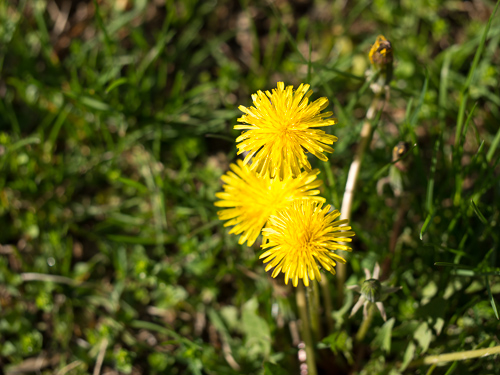
IJ: It’s interesting how there seems to be an analogy to the intuitive nature of reality that science is now showing us, when you look inside atoms, for example, most of it is empty space—there’s nothing there.
SC: Yes, and yet there are relations and functions, and that’s what we see when we look into the body and the mind. We look, and we look, and we look, but we don’t find a concept of self or no-self. We don’t hold views of eternal existence or non-existence. We see functions and relationships. Nowhere in there is there a permanent, eternal, essential self. We can find that moment, again and again, where—affected by past causes and the present moment—we are creating the conditions that will become the effects we will experience in the future.
If someone just reads Abhidhamma books academically—if they manage to stay awake!—I’m not sure it would be very valuable. But if you apply the structure as a practical model for understanding how the mind encounters the world—to look at the five aggregates, for example—then I think we have a very powerful meditator’s model.
It’s not reality; it’s a model. This model takes the teachings of the Buddha (such as the five aggregates) and reminds us to observe carefully how matter, feeling, perception, consciousness, and the mental formations come together to create experience.
IJ: What are you planning for the BCBS course?
SC: This course at BCBS is going to be on the theme of training in happiness. I collected a group of discourses, all from the suttas, that look at the practices of virtue, concentration, mindfulness, wisdom, and insight. We’ll be working with the three trainings of sīla, samādhi and paññā, from the perspective of happiness. There are some fantastic discourses where the Buddha describes practicing mindfulness of breathing because it is an “ambrosial, pleasant abiding.” What an incentive! There are many discourses that emphasize the rapture, happiness, joy, and sublime peace that accompany jhāna. There are teachings that describe how and why one should “gladden the mind” and “suffuse the mind with rapture and happiness.” These trainings initiate a sequence of conditions that lead to the unsurpassed happiness of liberating insight.
Then there’s a whole group of discourses on virtue practices that illuminate how keeping the precepts gives to innumerable beings freedom from fear, and freedom from hostility, and helps us to experience immeasurable happiness for ourselves.
Recognizing that these practices circle around happiness is important, because I think sometimes Buddhism gets a bum rap. Buddhism is sometimes misperceived as a grim philosophy that is obsessed with suffering. After all, the suttas do say that “all that arises is suffering, all that passes away is suffering.” But the Buddha’s teachings point to how we produce suffering. Fully understanding suffering, we are empowered to stop creating the causes for suffering. Without causes, suffering ceases, and we experience the joy, peace, and unsurpassed happiness of a liberated mind.
I developed this course to focus our attention on the joy of practice at every stage of the training. I see all the trainings that we undertake—sīla, samādhi, paññā—from the perspective of happiness.
IJ: For those who haven’t had an opportunity to study with you or be at a retreat with you, is there anything that you would like them to know or expect in the way that you conduct a course? Is it going to be similar to what they’re used to?
SC: This course is a discussion. We’ll read the texts, and discuss them together. I’ve developed a sixty-page collection of suttas that express the joy, happiness, and bliss of this path. We’ll explore the impact that these teachings have on our approach to practice, and consider how their messages relate to our lives today. But most importantly, I think we will see how much more we can enjoy our practice once we recognize the vital role happiness plays in the liberating teachings of the Buddha.